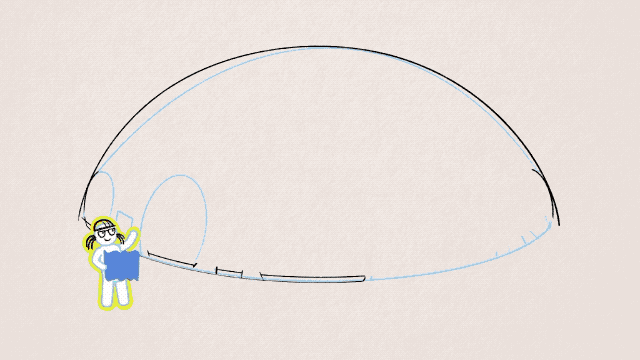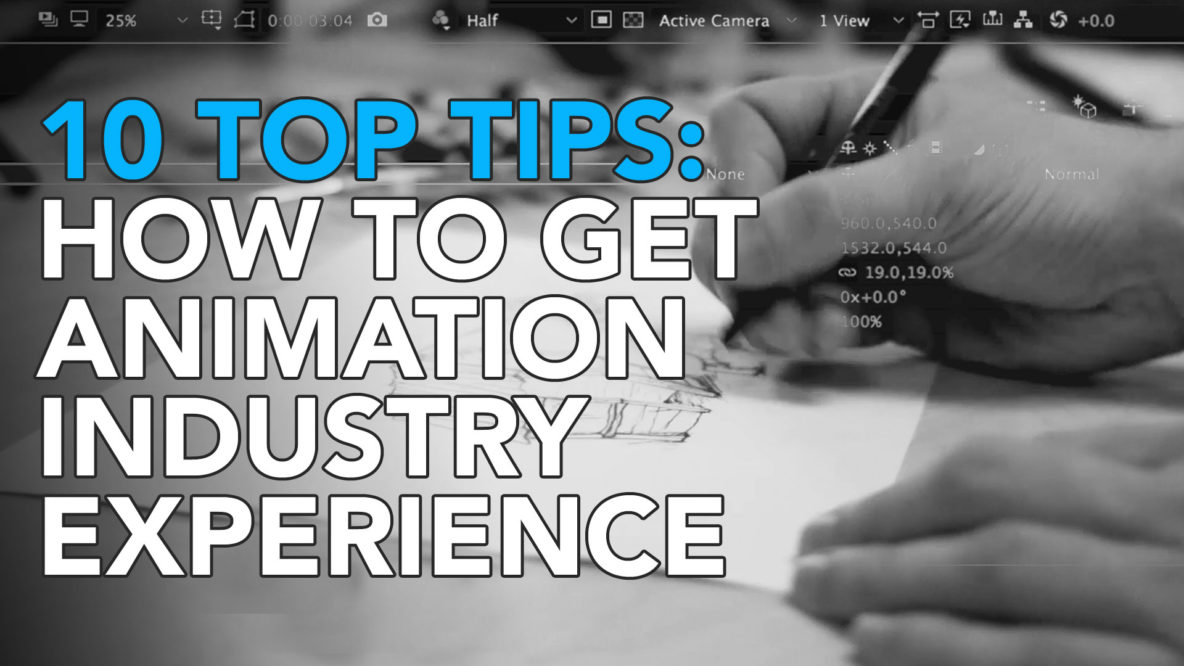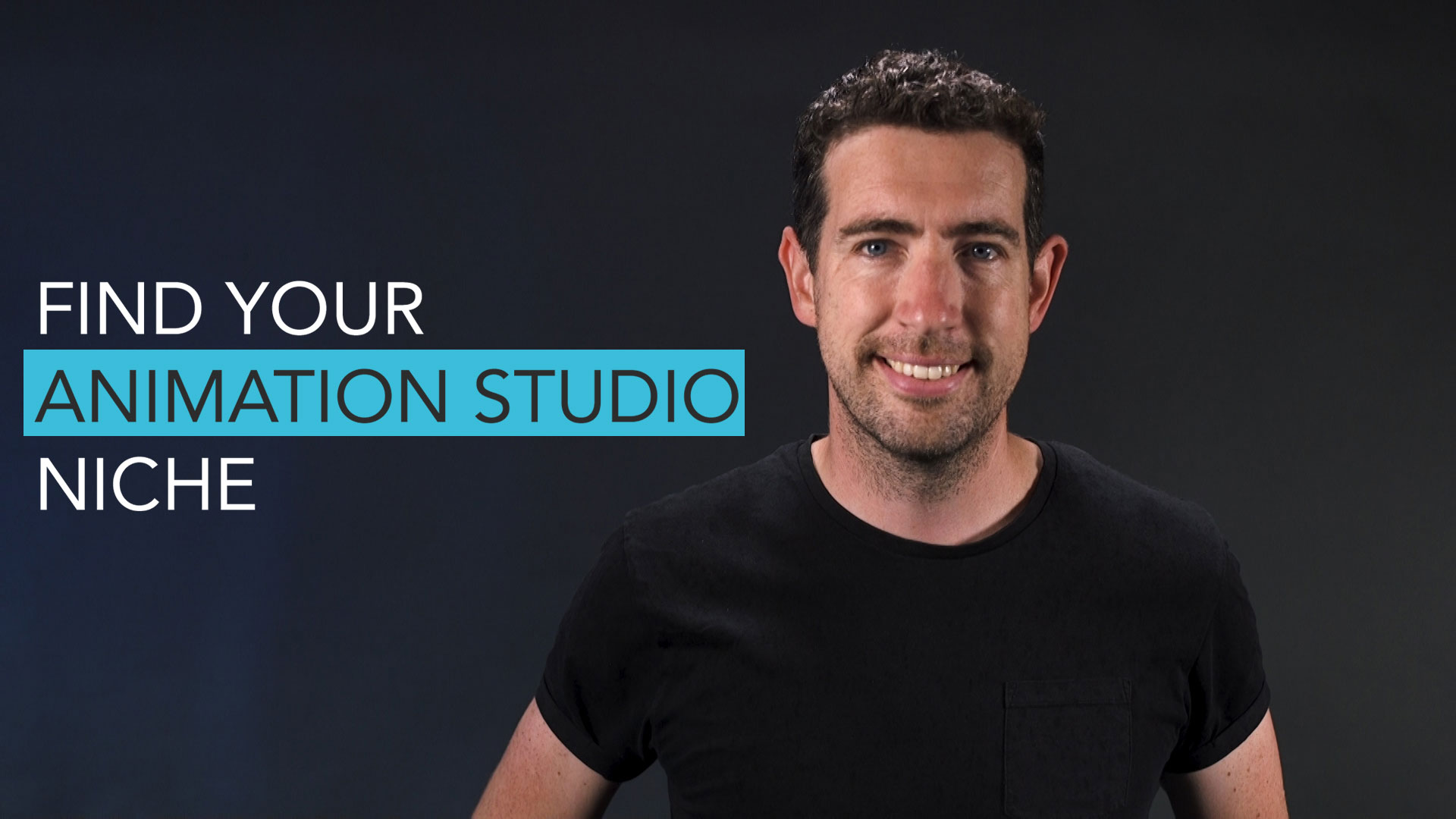
UK animation studio shares: 10 top tips on
how to get animation industry experience
and get a job as an animator
If you've arrived at this page you'll no doubt agree that animation is an exciting career path. The wide range of creative disciplines the industry calls upon is fantastic. The credits sequence for an animated feature film highlights the nearly endless number of creatives involved. You'll see roles for storyboard artists, character designers, matte painters, motion designers, 3D modellers, texture artists and VFX artists. Plus sound designers, scriptwriters, countless other disciplines and also animators. They've all had to find their way into the industry. We have a text interview with an animator here, which touches on subjects around getting career in the industry.
However, when it comes to getting the first step in the animation industry, you’ll quickly find that the vast majority of job roles require X number years of experience, even for a junior position.
It can be incredibly frustrating, as you cannot gain the experience without getting a job in the first place. The critical thing is to not only have some experience but also ensure you stand out head and shoulder above the other applicants so you can land your dream role.
So let’s explore this in a little more detail and then share our 10 top tips on how you can get animation experience and get your animation career underway.
This video includes some other tips and ideas. There may be a little crossover but the this blog post includes much more detail. If you have time, I'd recommend you check out both.
Why do studios want animators with experience?
All animation studios are of course, a business, and they’ll need to ensure the right level of productivity, so managing cash flow will be key to keep their business afloat with the overall aim of being profitable and producing high-quality work. Something we delve into in our seperate article on starting your own animation studio.
So when taking on new staff either freelance, contracted or permanent, a business weighs up the requirements and look to balance the risks of cost, speed and quality.
When a project has an imminent deadline, then an experienced animator is seen as a safer and quicker pair of hands. There should, in theory, be less risk and they’ll confidently be able to deliver the animation tasks at hand.
For a more substantial project with many roles to fill, a junior position is much more likely.
As an animation studios variety of jobs can be filled to free up the rest of the more experienced team. The studio will, of course, hope to find a talented and passionate individual. Someone whose skills, they're happy to invest time and money in developing. Improving their skills and helping to ensure they're a good fit with the rest of the team.
For a small UK animation studio like ourselves, we generally look for animators for junior positions with experience of 1 to 3 years. Then when last-minute projects require us to scale up a team quickly, senior animators are chosen who can either work in-house or remotely. As we’re a pretty small setup, we don’t generally bring on graduates (yet), though as the studio grows it is something we're keen to do in the future.
The traits we’d look out for are the needed technical skills, a real drive to learn new skills, a passion for design and animation and a friendly persona.
So with the question of ‘Why do studios want animators with experience’ we can move on to our ’10 top tips on how to gain animation industry experience’. The overall aim of this list to help get you one year of industry experience, that can separate you from the pack.
How to gain animation industry experience and get a job as an animator.
1. Keep improving your drawing skills, life drawing in particular
Whether you have eyes on a career as a 3D modeller, 3D animator, 2D character animator, motion graphic designer or storyboard artist, just keep drawing and build it into your daily routine.
By forming a regular habit, you'll ensure you continue to improve your design and illustration skills long after leaving education. These improved drawing skills show evident passion and help set you apart from your competition.

Drawing skills
"...just keep drawing and build it into your daily routine"
2. Build up software skills that are in demand
You may have been taught a particular animation software while at university, which is excellent. Though by being limited to 1 or 2 software packages, you reduce your overall value and opportunity for finding that first animation industry role.
So do a little research and look at the requested software skills in current job adverts for junior and senior animators. Then invest time learning or improving your skills in the most appropriate software.
There are, of course, an extensive range of software applications to consider. Different animation techniques require specific tools and areas of industry (which cater to different production budgets) often have a preference too.
However to get you started; If you’re a 3D animator looking to work in blockbuster movies and visual FX, learning Maya could be worthwhile as it’s used consistently in this field. Or Houdini where the demand for this powerful and sophisticated software has grown over recent years.
For traditional frame-by-frame animation take a look at Toonboom or TV Paint. Again there are many other software options to choose. On the Apple iPad, 'rough animator' is also a great app to spend time with and perfect your traditional animation skills or even build it into part your overall workflow. It's also avaialble for Android, Mac OS and Windows
If you’re eyeing the field of storyboard illustration, mastering Photoshop and a drawing monitor would be a plus. Also, check out the fantastic Procreate illustration app on the iPad. (Which now has animation potential too). Boords.com is a relatively new and handy cloud based service for building and arranging storyboards and creating PDFs. We currently work with that on every storyboard project at our UK animation studio.
If interested check out our old review on an iPad Pro draft table to help create that mobile Ciniq experience.
For marketing and business animation studios, much like our own, we’d recommend learning the Adobe Creative Suite with a particular focus on Adobe Illustrator for design and After Effects for animation. Also over time learn some of the 3rd party plugins for After Effects, i.e. Element 3D, Stardust, Particular. Plus character rigging toolsets Rubber hose and DUIK.
For 3D modelling and animation, many marketing, corporate or architectural animation companies would work with Cinema 4D or 3D Studio Max. Cinema 4D, in particular, has some integration with After Effects, which allows for a more efficient workflow in the full production process.
Finally, if you're interested in interactive media, i.e. computer game animation or VR experiences, we'd recommend also learning your way around one of the leading Game engines such as Unity or Unreal Engine.
3. Develop a sensational showreel, portfolio and concise CV
If you're applying for an animation role, or perhaps speculatively reaching out to a studio. Ensure you have a smart-looking showreel and portfolio of your best work. Plus a short CV. Where possible, don’t show unfinished work or something produced in your 1st year of study unless it's perfect.
You don’t have to have a website of your own for this (but it is useful for other things). You can host your showreel on Vimeo, along with extra design work and text with pages on Behance.
A showreel need only be between 45 and 85 seconds. Any longer and you can guarantee the viewer is likely to skip through, potentially missing your best work. Get someone to critique your showreel (i.e. post it on Reddit ) and be willing to cut it down till it shows the level of your skills to the highest degree. Also, bear in mind that music is very much a personal taste, so hold back on the heavy death metal or abstract dance and try and find something a little safer. If suitable you can cut to the beat. Check out audiojungle.net for some low-cost stock music options.
With your CV, I’d recommend keeping it concise. i.e. no more than 1 page of A4. Studios receive a lot of intern and animation job requests, so keep it short. List the software you currently work with and to what skill level. Any areas of animation / design / illustration / media you’ve studied. Highlight courses you’re currently tackling or skills you’re working on in your spare time. Plus list what industry experience you’ve had to date (Whether that’s personal projects that have had some recognition, freelance work, runner positions, work experience.).
Our uk animation studio showreel. Note its length is just 1.03
Showreels & Portfolios
"A showreel need only be between 45 and 85 seconds."
4. Share and Be inspired by Behance (& Motionographer)
We recommend building a presence on Adobes design showcase site Behance.com. It serves as a handy place to get your best work seen. Increase the chance of you being approached for freelance work and improve your level of experience in the industry. It also provides an alternative place to point people to if you don’t have a website of your own, and you can show some of the behind the scenes stages that went into a project.
The second benefit of sharing your work on Behance is that it allows you to build a habit of regularly checking out the outstanding work being shared there by other individuals and teams. Which has the added benefit of you being driven to raise the quality of your work. Plus the design and layout of Behance pages is a skill in of itself, that once done correctly showcases your design skills and passion for your work.
While we are on the subject of inspiration, I wholeheartedly recommend you check out motionographer.com from time to time to see the incredible and original animation work that gets curated and shared there throughout the year.
Years after first writing this blog post and sharing related videos on Youtube. I went on to create an award-winning online course, jobs board and other resources to help you plan and launch your own viable animation studio.
Find out more via the link below.

5. Personal projects
An effective way to continue to develop your skills and build up your portfolio of work for your showreel is to spend time on personal projects, whether it’s a solo project or collaboration.
Having a project to focus on can be incredibly beneficial. It not only gives you something to work on but it also instantly shows a potential employer that you’re an empowered individual with a real passion for creative work. This second point alone is worth so much when in competition with others who may only have their student work examples.
Finally, if the personal project is good enough, enter it into various competitions. As this can also be something to highlight in your CV and help get the word out that you’re a talented new animator that should be picked up quickly by any studio.

6. Low paid, freelance work
Trying to generate work purely for a portfolio or to learn new skills can be tricky as the personal motivation can soon dwindle, especially when the bright lights of the web and Netflix are calling.
So to help provide some much-needed drive and build up some real-world animation experience. Consider pitching for low paid freelance work on one of the many freelancer websites. i.e. PeoplePerHour. It is admittedly a bit of a race to the bottom in some instances, though with a few animated ident projects or something a little larger under your belt your already building up that valuable experience and it’s a great introduction to the world of paid animation work.
Also, for many animators, a long term career working as an in-demand freelance animator is the norm.
7. Studio Outreach: Email, phone and snail mail
Start approaching the companies you’d like to work for, or who may at least be able to provide some of that much-needed industry experience.
Make a list of each animation studio, ad agency, video production company, graphic design house or PR department you think might be able to offer you a brief or long term junior animation or design role.
Then send out a polite and concise email requesting a possible chance for a meeting to discuss any junior animation roles. Include a link to your animation website, showreel or Behance page and attach your perfect concise CV as a PDF file.
Don’t be annoyed if many don’t reply; small studios can receive over 25 enquires a day and responding to each, and everyone is a business expense that is not always achievable. At Stormy Studio, we do our best to reply to most and do keep many on file that might suit upcoming projects.
Other effective routes to getting your name on someone's radar are to send an old school printed letter. It allows you to show off your design skills and this different approach notably takes more time and effort and can mean you can once again stand out from the pack.
While animators (like myself) can be reasonably introverted, merely calling a business and seeing if there are any upcoming junior positions can be an effective way of getting your name noticed. You could also enquire as to whether they’ve received your email or letter.
So much of the success of this approach is down to timing. If a company happens to have secured a new project that same day or week, they may well go. “Yes, great, can you come in this afternoon for a quick introduction and then possibly start tomorrow..”. Then, with your fantastic improving technical skills, superb looking portfolio of work and evident passion for learning and the industry as a whole... you’ll be sure to be a great success.
8. Finding those elusive junior animation jobs
It's all well and good having a great set of skills, work and undeniable passion for the work but if you can’t find a job to apply for it’s going to all be for nothing.
So with that in mind, start building up a regular set of websites, and social media destinations that you can check to find animation positions. There are now a wide variety of websites that host jobs that might be of interest. With job posts also appearing across social media platforms every day.
Some social media platforms suffer from some meagre pay, but now and then a respectable animation freelance job is shared with a decent pay rate.
In the UK, some less visited but still worthwhile sites for checking are Mandy.com or ShootingPeople.org.
Global site animatedjobs.com is very good and job posts for studios from around the globe can be found here. Including those for some very high profile studios.
You can also checkout our own studios animation jobs page here.
Then there's the Reddit page r/animationcareers, where our UK animation studio has recruited several remote freelancers recently.
On Facebook, there’s a group called ‘animation studio jobs and freelance works’ though many of these jobs seem to have unusually low pay recently, it is still worth keeping an eye on.
Linkedin has made a big push into recruitment recently, so it’s worth keeping an eye there too.
Behance.com also has a premium job listing area where some quality job posts are shared.
It's still worth browsing the more standard job sites like Indeed, as they allow companies to post listings for free. Both small and large studios post job vacancies there as well.
Lastly, many animation studios have a jobs or careers section on their site where they may list current animation vacancies or just an ongoing request for those with specific skillsets.
9. Maintain your passion
While all the above steps help you achieve in building that animation industry experience, there’s no guarantee that you’ll quickly find a route into the industry.
So you must be enthused by the work you’re doing. Spend time developing projects that you’re interested in — finding an art style of your own and techniques that you enjoy using. Watch excellent TV series, shorts and feature films that inspire. Subscribe to relevant behind the scene channels on Youtube and engage with the community on forums or Reddit.
This love for the creative arts ensures you’ll have the staying power to carve out your place in the world of animation while helping you to endure the harder times where you may otherwise be tempted to give up and take a road to a less fulfilling job. Working in animation can be a superb and rewarding career, and it’s certainly worth the effort.

10. Persistence
Finally, keep trying.
You may need to email a thousand studios, speak to 100 animators and spend over 2 years improving your portfolio, showreel and CV before you even start to get interviews for junior animation positions.
However, if during this time you can produce personal projects, take on small low paid freelance projects and continue to improve your skills set, you will 100% make it.
Perseverance and a continued passion for learning and the animation industry as a whole guarantee success. Good luck.

Quick Recap: 10 Top Tips For Gaining Animation Industry Experience and Getting a Job as an Animator.
1. Keep improving your drawing skills, life drawing in particular.
2. Build up software skills that are in demand.
3. Develop a sensational showreel, portfolio and concise CV.
4. Share and Be inspired by Behance (& Motionographer).
5. Personal projects.
6. Low paid, freelance work.
7.Studio Outreach: Email, phone and snail mail.
8. Finding those elusive junior animation jobs
9. Maintain your passion.
10. Persistence
That's a wrap...
Hopefully the above 10 top tips for gaining animation industry experience and getting a job as an animator prove very useful.
If interested grab yourself a cuppa tea and then check out a written interview I gave for a careers site, which touches on subjects around getting a career in the animation industry.
I'd love to hear any comments, questions, your own suggestions, struggles and success stories. Please do comment below.
Goods luck out there.
Jon Draper - Creative Director at Stormy Studio.
After lots of pondering... our studio launched an online course, jobs board and community to help you plan and start your own animation studio.


